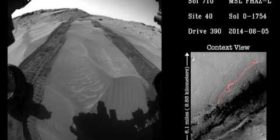The most awaited celestial event of 2017 – the total solar eclipse – that is to take place on Monday, August 21, has everyone in the space circuit including space enthusiasts all over the world buzzing with excitement.
The rare eclipse will be gracing the skies after 99 years and it’s a once in a lifetime chance for people to view it.
While people from across the country are rushing to places in the US, where the eclipse will be clearly visible from, those who won’t be able to view it directly are looking forward to its live coverage on NASA’s website as well as on YouTube.
Tomorrow, the Earth will cross the shadow of the moon, creating a total solar eclipse. During the eclipse, the moon will pass between the Sun and Earth, blocking the face of the sun and leaving only its outer atmosphere, or corona, visible in the sky.
As per NASA, crossing the country from Oregon to South Carolina over the course of an hour and a half, 14 states across the continental US will experience night-like darkness for approximately two minutes in the middle of the day.
While the eclipse is at its peak, a team of solar physicists are planning to capture high-resolution sunspots – the visible concentrations of magnetic fields on the Sun’s surface – at microwave radio wavelengths.
Sunspots are the primary generator of solar flares, the sudden, powerful blasts of electromagnetic radiation and charged particles that burst into space during explosions on the Sun’s surface.
Their turning motion causes energy to build up that is released in the form of flares.
“Radio waves from the solar corona have long wavelengths, and as resolution is proportional to wavelength, our images ordinarily have rather low spatial resolution. But we can capture sharper images as we move in the direction of the Moon’s motion as it blocks different parts of the Sun at different times,” said Dale Gary, professor at the New Jersey Institute of Technology (NJIT).
“Radio waves are sensitive to the otherwise invisible corona of the Sun, especially its magnetic field, so we will use the eclipse to make high-resolution images of the corona above active regions.”
Using the NJIT’s Expanded Owens Valley Solar Array (EOVSA) and from the Jansky Very Large Array (VLA) radio telescope, the researchers will be able to cover between 75 to 80 per cent of the sunspots at microwave radio wavelengths.
As both EOVSA and the VLA have much greater capabilities the researchers can expect much better radio images and more complete frequency coverage from which to deduce the magnetic field, temperature and density of the corona.
The solar science to be addressed focuses on the magnetic structure of the solar corona, on transient phenomena resulting from magnetic interactions, including the sudden release of energy and subsequent particle acceleration and heating, and on space weather phenomena, the researchers said.






Leave a reply